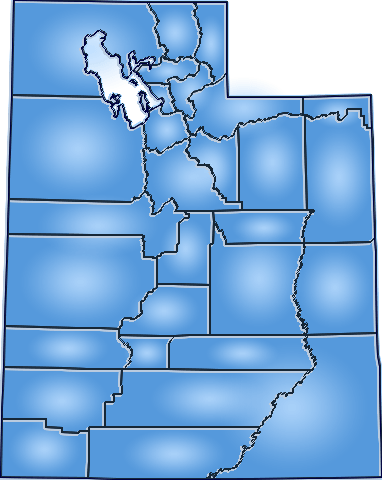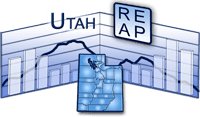Box Elder County vs. Utah Comparative Trends Analysis: Average Earnings Per Job Growth and Change, 1969-2022 Introduction  Box Elder County: 2022 Avg. Earnings = $55,604 2022 Percent of State = 89.09% Utah: 2022 Avg. Earnings = $62,411 The United States economy has generated an impressive number of jobs since the 1970s. The contrast between the nation's vigorous employment growth and the modest performance of other major industrial countries is striking. Despite this rosy track record, the real (inflation adjusted) wages and salaries of many workers have stagnated or slipped in recent years. This development has provoked concerns about the quality of new jobs. Structural shifts in the composition of employment--from high-wage goods-producing to low-wage services-related sectors--is the culprit most often cited for the deteriorating quality of jobs. Regions vary greatly in the make-up of their labor force, in their industry composition of employment, and their economic experience. Reviewing and examining recent developments in average earnings per job in Box Elder County with comparisons to Utah and the nation is an important first step in understanding the economic forces at play in Box Elder County. Discussion: Average Annual Earnings Per Job are computed by dividing BEA total industry earnings estimates by the BEA total full- and part-time jobs estimates. No convenient or adequate means exist at the county or regional level for converting the job estimates to a full-time equivalent measure. So, interpret the average earnings per job estimates with caution in consideration of the following issues: Average earnings per job within industries involving more part-time work is lower than industries involving more full-time work, although there could be little difference in the underlying wage of full-time workers. Such differences could also prevail between counties and regions. An increase in the proportion of part-time jobs over time may erode average earnings per job estimates, although full-time earnings per worker may have remained unchanged. As with per capita income, average earnings per job may be subject to extreme short-run variation, especially in smaller counties. Major construction projects relating to building dams, nuclear power plants, and private plant construction projects have caused extreme fluctuations in many smaller counties. Such changes typify both small and large agriculture-dependent counties owing to the extreme annual variations in farm incomes. Also, Since average earnings per job are just a simple average, it does not account for variations in the distribution of earnings among high- vs. low-wage jobs. Box Elder County Average Earnings Per Job, 1970-2022 Current vs. Constant Dollars  Figure 1. Figure 1 depicts Box Elder County's annual average earnings per job over 1970-2022 in current and constant (2017) dollars. Constant dollar measurements remove the effects of inflation. They allow for comparison of changes in the real purchasing power of Box Elder County over time. When measured in current dollars, Box Elder County's average earnings per job increased 773.26%, from $6,367 in 1970 to $55,604 in 2022. When measured in constant 2017 dollars to adjust for inflation, it advanced 48.75%, from $32,214 in 1970 to $47,917 in 2022. Real Average Earnings Per Job, 1969-2022  Figure 2. Figure 2 traces Box Elder County's and Utah's annual real average earnings per job for the period 1969-2022 to illustrate real average earnings per job patterns over time. During this 54-year period, Box Elder County's real average earnings per job rose from $31,832 in 1969 to $47,917 in 2022, for a net gain of $16,084, or 50.53%. In comparison, Utah's real average earnings per job increased from $33,719 in 1969 to $53,782 in 2022, for a net gain of $20,063, or 59.50%. Average Earnings Per Job as a Percent of the U.S. Average: 1969-2022  Figure 3. Figure 3 portrays the trends for average earnings per job relative to the national average by tracing Box Elder County and Utah average earnings per job as a percent of the national average over 1969-2022. In 1969, Box Elder County's average earnings per job amounted to 83.73% of the national average; in 2022, it approximated 77.67%. Similarly, in 1969, Utah's average earnings per job totaled 88.69% of the national average; in 2022, it consisted of 87.18%. Box Elder County Real Average Earnings Per Job: Annual Percent Change, 1970-2022  Figure 4. Figure 4 shows the short-run pattern of Box Elder County's real average earnings per job growth by tracking the year-to-year percent change over 1970-2022. The average annual percent change for the entire 53-year period is also illustrated on this chart to provide a benchmark for gauging periods of relative high--and relative low--growth against the backdrop of the long-term average. On average, Box Elder County's real average earnings per job grew at an annual rate of 0.83% over 1970-2022. The county posted its highest growth in 1992 (6.71%) and recorded its lowest growth in 2011 (-7.94%). In 2022, Box Elder County's real average earnings per job grew by 0.49% Box Elder County Real Average Earnings Per Job: Annual Percent Change and Decade Averages Over 1970-2022  Figure 5. Over the past five decades some counties have experienced extreme swings in growth, and often such swings have tended to coincide with the decades themselves. Figure 5 again traces the annual percent change in Box Elder County's real average earnings per job since 1970, but this time they are overlayed with average growth rates for the decade of the 1970s, 1980s, 1990s, 2000s, 2010s, and 2020-2022. During the 1970s, Box Elder County's annual real average earnings per job growth rate averaged 1.56%. It averaged 2.47% in the 1980s, -0.32% during the 1990s, 0.33% in the 2000s, -0.37% in the 2010s, 2.35% thus far this decade (2020-2022). Real Average Earnings Per Job Growth: Average Annual Percent Change by Decade  Figure 6. Figure 6 compares the decade average growth rates for Box Elder County noted in the previous graph with the corresponding decade averages for Utah and the nation. As the chart reveals, Box Elder County's average annual real average earnings per job growth led Utah's average throughout the 1970s (1.56% vs. 1.15%), registered above Utah's average in the 1980s (2.47% vs. -0.33%), trailed Utah's average in the 1990s (-0.32% vs. 1.61%), lagged Utah's average in the 2000s (0.33% vs. 0.56%), recorded under Utah's average in the 2010s (-0.37% vs. 1.71%), and exceeded Utah's average over the 3 year period of the current decade, 2020-2022 (2.35% vs. 0.24%). Finally, relative to nationwide real average earnings per job growth trends, Box Elder County registered above the nation over the 1970s (1.56% vs. 0.89%), topped the nation over the 1980s (2.47% vs. 0.71%), posted below the nation during the 1990s (-0.32% vs. 1.68%), posted below the nation throughout the 2000s (0.33% vs. 0.72%), fell under the nation throughout the 2010s (-0.37% vs. 1.01%), and recorded above the nation over 2020-2022 (2.35% vs. -0.24%).
| Analysis Options Menu | ||||||||||||||||||||||||||||||||||||||||||||||||||||||||||||||||||||||||||||||||||||||||||||||||||||||||||||||||||||||||||||||||||||||||||||||||||||||||||||||||||||||||||||||||||||||||||||||||||||||||||||||||||||||||||||||||||||||||||||||||||||||||||||||||||||||||||||||||||||||||||||||||||||||||||||||||||||||||||||||||||||||||||||||||||||||||||||||||||||||||||||||||||||||||||||||||||||||||||||||||||||||||||||||||||||||||||||||||||||||||||||||||||||||||||||||||||||||||||||||||||||||||||||||||||||||||||||||||||||||||||||||||||||||||||||||||||||||||||||||||||||||||||||||||||||||||||||||||||||||||||||||||||||||||||||||||||||||||||||||||||||||||||||||||||||||||||||||||||||||||||||||||||||||||||||||||||||||||||||||||||||||||||||||||||||||||||||||||||||||||||||||||||||||||||||||||||||||||||||||||||||||||||||||||||||||||||||||||||||||||||||||||||||||||||||||||||||||||||||||||||||||||||||||||||||||||||||||||||||||||||||||||||||||||||||||||||||||||||||||||||||||||||||||||||||||||||||||||||||||

